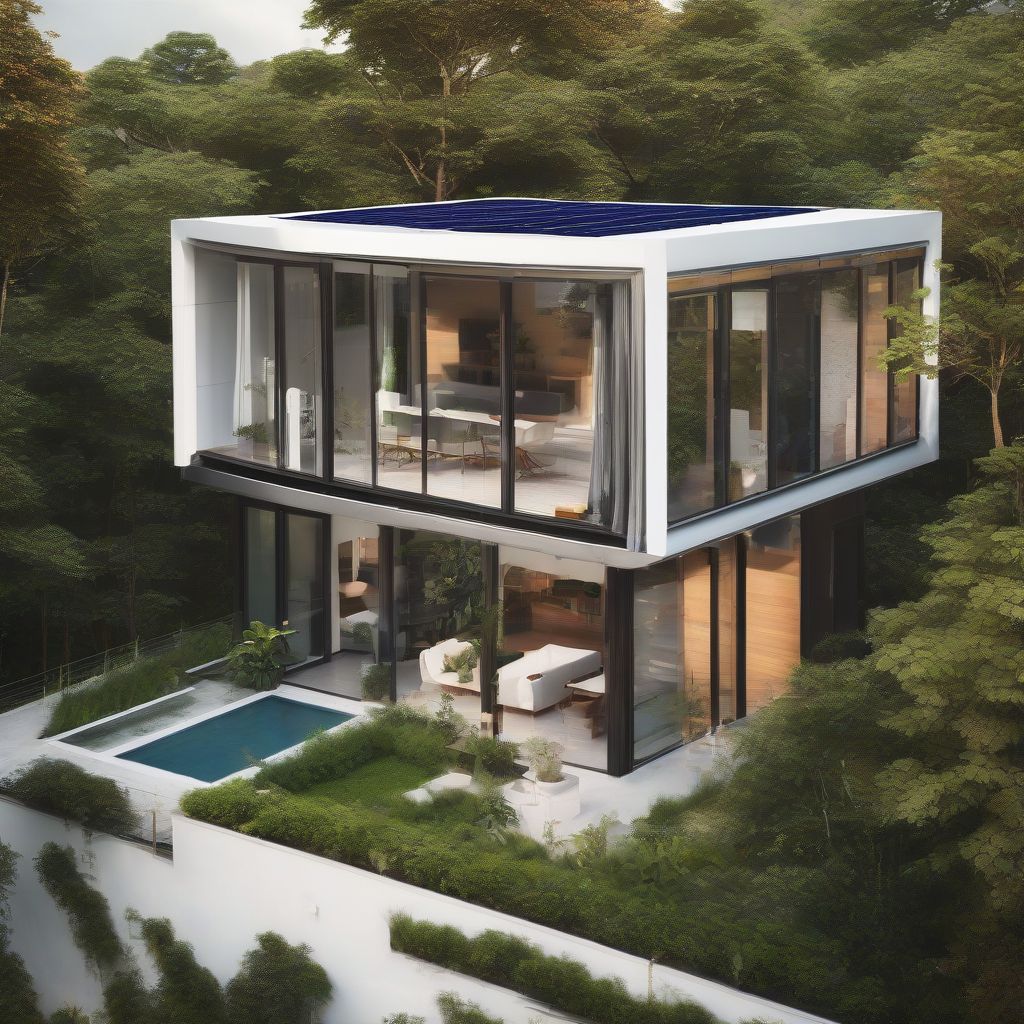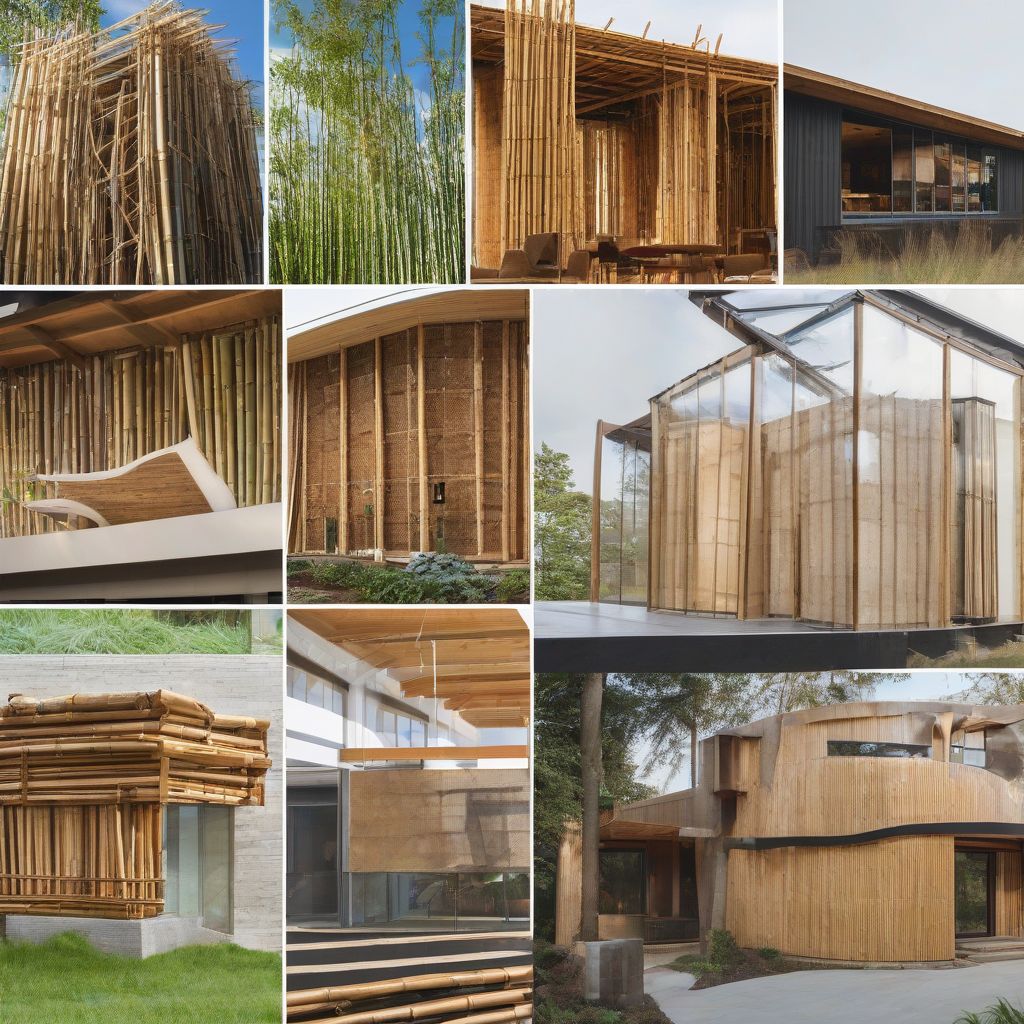Imagine a home so in tune with nature, it generates all the energy it needs, leaving behind a zero-carbon footprint. This isn’t a scene from a futuristic movie; it’s the reality of zero-energy buildings, sustainable havens leading the charge towards a greener future.
But how exactly do you create a zero-energy building? What green practices transform an ordinary structure into a beacon of sustainability? This comprehensive guide delves into the innovative world of zero-energy buildings, providing a roadmap for eco-conscious individuals and builders alike.
Understanding Zero-Energy Buildings
Before diving into the ‘how’, let’s clarify the ‘what’. A zero-energy building, also known as a zero net energy (ZNE) building, produces as much energy as it consumes over a year, effectively achieving a net-zero energy consumption. This balance is usually achieved through a combination of energy efficiency and renewable energy generation.
Designing for Efficiency: The Foundation of a Zero-Energy Building
The journey to zero-energy begins with a design that prioritizes energy efficiency. Here are key considerations:
1. Orientation and Passive Design Strategies
- Solar Orientation: Optimizing a building’s orientation to maximize solar gain in winter and minimize it in summer can significantly reduce heating and cooling needs.
- Natural Ventilation: Implementing design features like operable windows, skylights, and strategically placed vents can harness natural breezes for ventilation, reducing reliance on energy-intensive air conditioning.
- Daylighting: Maximizing natural light through strategically placed windows, skylights, and light shelves not only brightens interiors but also reduces the need for artificial lighting during the day.
2. Building Envelope Optimization
- Insulation: A well-insulated building envelope (walls, roof, and foundation) acts as a thermal barrier, minimizing heat transfer and reducing the need for heating and cooling.
- Air Sealing: Air leaks can account for significant energy loss. Thorough air sealing around windows, doors, and other penetrations is crucial to maintain a comfortable indoor temperature.
- High-Performance Windows: Energy-efficient windows with low-E coatings and insulated frames minimize heat gain in summer and heat loss in winter.
3. Energy-Efficient Appliances and Systems
- ENERGY STAR Appliances: Choosing ENERGY STAR certified appliances ensures optimal energy efficiency in appliances like refrigerators, dishwashers, and washing machines.
- High-Efficiency HVAC Systems: Opting for high-efficiency heating, ventilation, and air conditioning (HVAC) systems, such as geothermal heat pumps and variable refrigerant flow systems, can significantly reduce energy consumption.
 Zero-Energy Building Design
Zero-Energy Building Design
Harnessing Renewable Energy: Powering Your Zero-Energy Building
While energy efficiency minimizes energy demand, incorporating renewable energy sources ensures your building generates the power it needs.
1. Solar Power: The Sun’s Energy at Your Service
- Photovoltaic (PV) Systems: Solar panels convert sunlight directly into electricity, powering your home and potentially feeding excess energy back into the grid.
- Solar Water Heaters: Utilize solar energy to heat water for domestic use, significantly reducing the load on your traditional water heating system.
2. Wind Energy: Tapping into Nature’s Force
- Small Wind Turbines: For locations with sufficient wind resources, small wind turbines can generate electricity to supplement your energy needs.
3. Geothermal Energy: Earth’s Constant Temperature
- Geothermal Heat Pumps: These systems utilize the stable temperature of the earth to provide energy-efficient heating, cooling, and even water heating.
Green Practices: Enhancing Sustainability
Building a zero-energy home extends beyond energy efficiency and renewable energy. It embraces a holistic approach to sustainability, incorporating eco-friendly materials and practices throughout the construction and operation phases.
1. Sustainable Materials Selection
- Recycled Content: Utilizing building materials with recycled content reduces the demand for virgin resources and minimizes waste.
- Locally Sourced Materials: Choosing locally sourced materials reduces transportation emissions and supports local economies.
- Sustainable Forestry Practices: Selecting wood products certified by the Forest Stewardship Council (FSC) ensures responsible forest management.
2. Water Conservation Measures
- Low-Flow Fixtures: Installing low-flow faucets, showerheads, and toilets significantly reduces water consumption.
- Rainwater Harvesting Systems: Collect rainwater for irrigation, laundry, and other non-potable water uses, reducing reliance on municipal water sources.
- Greywater Recycling Systems: Treat and reuse greywater (water from sinks, showers, and laundry) for irrigation and toilet flushing, further minimizing water usage.
3. Indoor Environmental Quality
- Low-VOC Materials: Choosing paints, adhesives, and flooring materials with low or no volatile organic compounds (VOCs) improves indoor air quality.
- Natural Ventilation Strategies: Design features that promote natural ventilation not only reduce energy use but also improve indoor air circulation and quality.
 Green Building Materials
Green Building Materials
The Benefits of Zero-Energy Buildings
Embracing the principles of zero-energy building design and green practices offers numerous benefits:
- Environmental Stewardship: Significantly reduce your environmental impact by minimizing energy consumption, reducing greenhouse gas emissions, and conserving resources.
- Financial Savings: While the upfront costs of zero-energy buildings may be slightly higher, the long-term energy savings can lead to significant financial benefits.
- Increased Comfort and Health: Zero-energy buildings often provide superior indoor environmental quality, with improved air circulation, natural lighting, and stable temperatures, contributing to a healthier and more comfortable living environment.
- Energy Independence: Reduce reliance on traditional energy grids, increasing resilience against energy price fluctuations and potential power outages.
Conclusion
Creating a zero-energy building is an achievable goal that embodies a forward-thinking approach to sustainable living. By integrating energy-efficient design, renewable energy sources, and eco-friendly practices, we can create homes that are not only environmentally responsible but also comfortable, healthy, and cost-effective. As we face the increasing urgency of climate change, embracing zero-energy building principles is not just an option—it’s a responsibility we owe to ourselves and future generations. Let’s build a future where sustainable living is not an aspiration but a reality.
Are you ready to embark on your zero-energy building journey? Share your thoughts and questions in the comments below!
[amazon bestseller=”sustainable building materials”]
